Stepping into the world of surfing, where the excitement of riding the waves excites all levels of surfers. However, what comes first is always the safety and respect for the ocean in order to help surfers stay safe in the sea, forming a culture of surf safety that benefits everyone in the water. We cover everything from knowing your beach to choosing the right surfboard. These tips are helpful whether you’re just starting out or already catching waves regularly. Let’s get you prepared for your surfing adventure with some useful advice!
1. Check the Weather for Surf Safety
When you plan to go surfing any day, start by checking the weather since the weather significantly influences ocean conditions, impacting the wave size, wind direction, and current strength. For instance, strong winds cause big waves, and the direction of the wind also changes how the waves form.
Once you have a clear picture of what the ocean will be like, you can avoid dangerous stuff like getting stuck in strong currents, being surprised by big waves, or getting caught in a storm.
Acknowledging the safety tips for surfing and surf safety rules like checking the weather conditions improves the surfing experience and reduces the risk of encountering dangerous situations in the ocean.
2. Mind Your Surf Etiquette
Surf etiquette is a set of surfing rules that ensure everyone’s safety in the water.
These manners on the water include understanding who has the right of way, sharing waves instead of “dropping in” them, and always wearing a leash for safety.
Additionally, these unwritten rules are part of respecting local surfers, holding onto your board if you wipe out, and leaving the beach cleaner than you found it.
Good surf etiquette prevents collisions, injuries, and maintains a positive atmosphere.
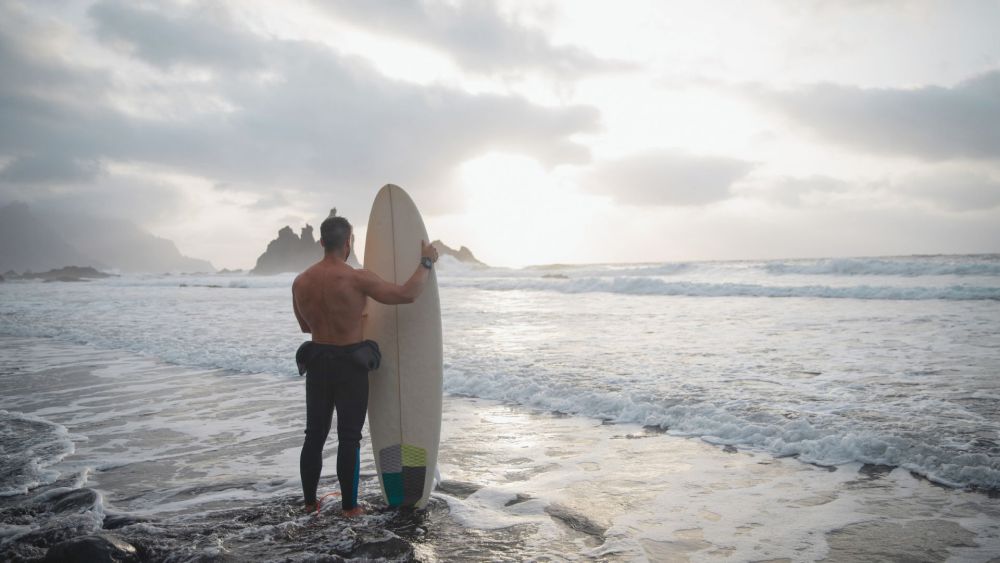
3. Know Your Limits
An essential aspect of surf safety is self-awareness and recognizing your own limits.
Not every wave suits every surfer; be mindful of surfing within your ability level.
Before heading into the water, check out things like the waves’ size and the currents’ strength. If it looks too tough, waiting another day is a better option. Start with easy surfing moves and slowly move up to more difficult ones. This way, you avoid injuries and learn safely.
A spot with a sandy bottom and fewer rip currents is ideal for beginners. If you’re unsure where to surf, ask your surfer friends or an instructor for advice. There’s no shame in stepping back and gradually building your skills.
By assessing your skills honestly and choosing waves that match your experience, you uphold key safety tips for surfing and ensure a safer environment for everyone in the surf.
4. Learn the Waters
To learn about the local waters, you should familiarize yourself with the specific characteristics of the surf spot, such as the presence of rip currents, rocks, and typical wave patterns.
Let’s shed light on these aspects:
- Tides and Currents: Tides and currents shape waves that affect your ability to surf well. Different surf spots may be better at high or low tide. Also, watch out for rip currents, which are fast-moving water channels that can be dangerous. Avoid surfing in areas with strong rip currents.
- Tides: Tides create a rhythm that affects how and where waves break. Sometimes, more or less water covers the shore, changing how waves behave.
- Wave Breaks: How a wave breaks (point, reef, or beach break) also matters. As you spend more time in the water, you’ll start to notice how different tides affect different types.
- Local Factors and Hazards: Each surfing location has unique features and risks. Be aware of things like reefs, rocks, and the presence of other surfers.
Practical Tips for Reading the Ocean:
Begin by using reliable surf forecasts to gather detailed information about swell, wind, and tides at your surf spot. Next, invest time in observing the ocean, paying close attention to wave patterns and behaviors, and noting any changes.
Engage with experienced surfers, as they can offer valuable insights and advice about the specific characteristics and potential risks of your surf spot. Lastly, trust your instincts; if the conditions seem unsafe or beyond your skill level, it’s wise to postpone your session or find a safer location.
5. Wear Proper Attire
When you’re gearing up for surfing, every piece of your outfit and equipment has a role in keeping you safe and boosting your performance.
Choosing the right wetsuit, rash guard, or other protective surfing gear regulates your body temperature and protects you from scrapes and sunburn.
Additionally, wearing a properly fitting leash and using the correct surfboard for your skill level are crucial safety tips for surfing. It’s like a lifeline that keeps your board close, preventing it from getting lost in the waves or causing accidents. Then, there’s the wetsuit – your shield against the cold, especially in chilly waters, and it helps you avoid scratches from rocks or bumping into other boards.
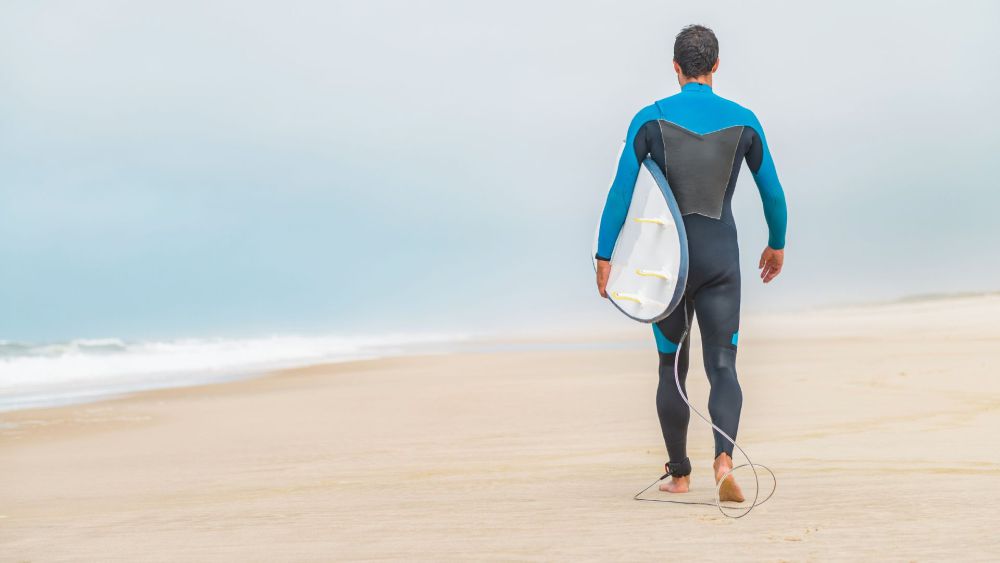
6. Always Be Aware of Other Surfers
Surfing involves more than just catching a wave; it’s also about being in sync with others in the ocean.
Surf etiquette, a part of the sport’s culture, revolves around respecting the unspoken rules of the beach and the sea. This means being fully aware of your surroundings, including other surfers. When you come to a new place, local surfers are the first people you need to seek advice from as they are familiar with the specific complex of the area.
As every beach has its own set of guidelines and rules, getting to know these before paddling out turns your journey into a worry-free one. It’s about respecting everyone’s space in the water, giving way to the surfer closest to the peak of the wave, and not dropping in on others. Surfers are not the only ones in the water; respecting the entire beach environment, including other beachgoers like swimmers and bodyboarders, is part of the experience.
In essence, surfing contributes to a culture of mutual respect and care, ensuring a positive and safe experience for all surfers in the lineup.
7. Check Your Leash and Fins
A well-maintained leash keeps your board securely tethered to you, which is a life-saver in challenging conditions.
Similarly, fins in good condition are key for precise maneuvering. Therefore, regular checks of these gadgets can significantly enhance your safety and confidence in the water, making your surfing experience enjoyable and secure.
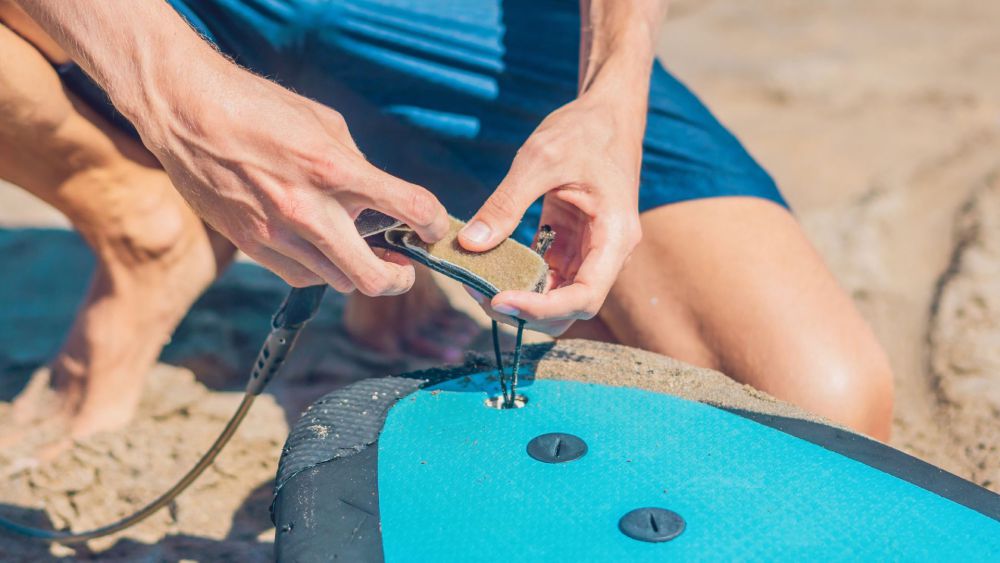
8. Be Aware of Rip Currents
Rip currents pose a notable challenge in surfing, but they can be handled safely with knowledge and awareness.
These currents, formed when waves retreat back to the ocean, create powerful flows of water heading seaward. They’re particularly risky for beginners or those not strong in swimming. Rip currents can be spotted as channels of choppy water with fewer breaking waves.
If caught in one, the best approach is to stay calm, remain on your surfboard for better flotation, and paddle or swim parallel to the shore. This strategy helps you exit the rip current’s force, allowing you to swim safely back to the beach.
Is surfing dangerous? Well, it can be, especially if you’re not cautious about rip currents. Swimming directly against a rip current isn’t effective and can exhaust you quickly. Keep an eye out for warning flags like ‘High Surf’ or ‘Strong Current,’ which signal potentially hazardous surfing conditions. If you’re ever unsure about the safety of the waters, it’s best to stay out and play it safe.
9. Buddy Up for Safer Surfing
Having someone alongside you means there’s always someone to keep an eye on you, and vice versa.
In the event of any trouble, like getting caught in a rip current or experiencing a wipeout, your buddy is there to assist or get help. It’s also about sharing the joy of surfing, celebrating good waves and improving together. Hence, consider bringing a friend next time you plan a surf session.
It makes the experience safer and often a lot more fun.
10. Hold Onto Your Board
Maintaining a firm grip on your surfboard guarantees your safety and that of others around you.
When you let go of your board, you’re at risk of losing your primary flotation device and causing accidents. Your board, attached by a leash, can have a large circumference of movement around you. If you lose control of it, especially in crowded areas, it can hit other surfers or swimmers, potentially causing injuries.
For example, surfers have reported permanent scars from incidents where others have released their boards to dive under an oncoming wave. It’s particularly dangerous in busy spots, where your board, connected to a 6-10 feet leash, can reach others who may be quite far from you. Even in scenarios like big waves hitting, always be mindful of where your board is and how it might affect others around you.
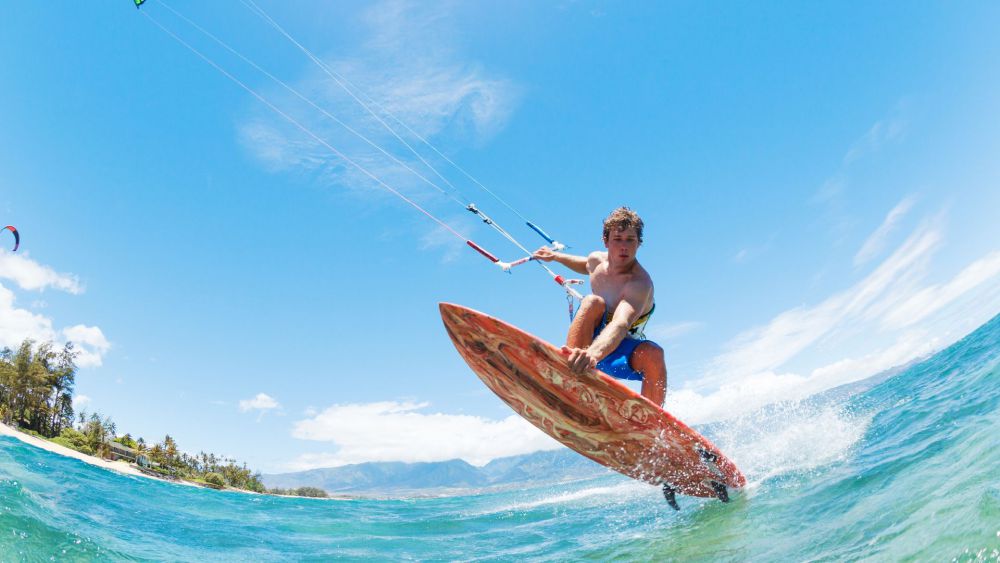
11. Protect Your Head
Whenever you fall or wipe out, always prioritize protecting your head.
Our head is known as the control centre with your brain, eyes, and ears. Therefore, the worst scenario is when you fall and hit your head. Sometimes the ocean floor has hard stuff like reefs or rocks, and falling on these can really hurt your head. Also, during a wipeout, your surfboard can hit you in the head, which you want to avoid.
This precaution minimizes the risk of injury from your board or the ocean floor, especially in shallower waters. Covering your head with your arms can significantly reduce the impact during a fall.
Knowing how to fall safely matters too. If the water is shallow and there are rocks or reefs, try to land flat on your stomach to stop you from hitting the bottom too hard. If the water is deeper or the bottom is sandy, it’s not as risky.
12. Plan Your Entry & Exit
Strategically planning your entry and exit points when encountering rocks, reefs, or strong currents in surfing involves understanding the best spots to enter and leave the water.
Experienced surfers tend to look for parts of the beach where the waves break in a regular pattern, and there’s a clear path to the water, making it easier to get in and out.
Before you jump in, spend a little time watching the water to see where the safest spots might be. The tide can also make a big difference. At some beaches, getting in and out of the water is easier when the tide is high because the conditions might be safer than at low tide. When you’re done surfing and ready to head back, try to pick a spot to exit where there aren’t any obstacles and the waves are a bit calmer.
13. Wear Suncream, Stay Hydrated
Spending time in the sun while surfing can be great for your Vitamin D levels and lift your mood.
To protect your skin, apply sunscreen with at least SPF 30, covering often-missed areas like ears and hairline, and reapply every two hours or after swimming.
Wear protective clothing like wide-brimmed hats and UV-protective gear, especially in bright or dark colours, to absorb more UV rays, which can further shield you from the sun. Surfing outside peak sunlight hours and finding shade during breaks can also reduce exposure.
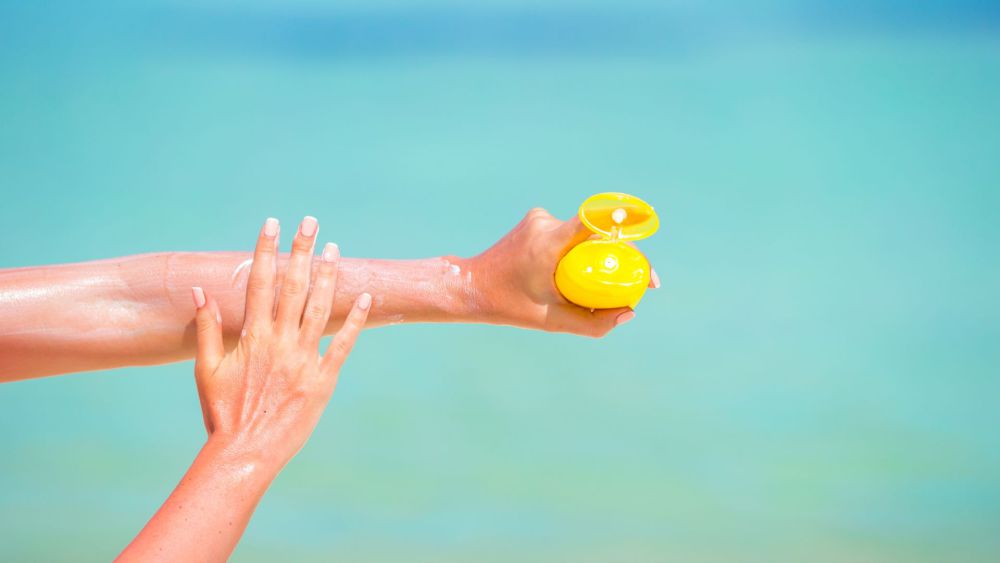
10 Essential Surf Equipment for Surfer
In the world of big wave surfing, having the right safety gear ensures a smooth journey. Here’s a list of surfing equipment to help you tackle those mighty waves with confidence:
- Surfboard Leash: This piece of equipment ensures your board remains attached to you, preventing it from drifting away or inadvertently colliding with other surfers.
- Foam Soft-top Surfboard: Especially beneficial for those new to surfing, these boards offer increased buoyancy and are less likely to cause injury.
- Surf Helmet: An indispensable safety gear, the helmet shields your head from potential impacts with your board, other surfers, or underwater rocks.
- Nose Guard: This attachment for your surfboard’s nose adds an extra layer of protection, helping to prevent injuries during wipeouts.
- Ear Plugs: Protect your ears from waterborne infections and the common condition known as surfer’s ear, prevalent among regular surfers.
- Powerful Sunscreen: A must-have to guard your skin against the intense UV rays you’ll encounter while surfing.
- Reef Boots: These boots provide essential protection for your feet against sharp reefs and rocky ocean floors.
- Soft Fins: Opt for soft-edged fins to minimize the risk of cuts or injuries from sharp fin edges.
- Safety Whistle: A simple yet effective tool for signaling distress or calling for help in emergency situations.
Each piece of equipment ensures your surfing safety, particularly in challenging big wave conditions.
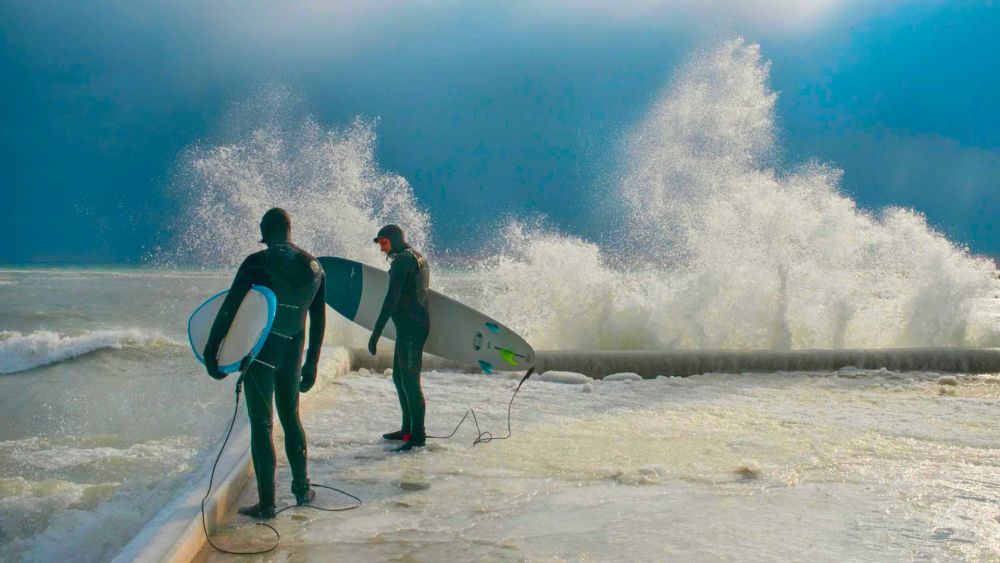
Boost Surfing Electric Fin: A Modern Surfing Innovation
The Boost Surfing Electric Fin is an innovative piece of surfing gear that can be attached to any board within 5 minutes to help you catch more waves, ideally for those keen on big-wave surfing.
- Quick Installation and Control: Easily attaches to any surfboard in 5 minutes, resembling a standard fin, with a wrist-controlled remote for instant power boosts.
- Enhanced Power and Speed: Delivers a significant 20 pounds of thrust, propelling surfers to up to 10mph speeds, enabling them to catch more waves effortlessly.
- Robust and Ocean-Ready Design: Made to meet the demands of the sea, the Boost Fin boasts a shock-resistant structure, ready to take on big-wave surfing. It’s meticulously designed to reduce drag and endure the tough conditions often faced in the ocean.
- Cutting-Edge Build and Battery Life: Constructed from high-quality materials, the fin weighs 2.7 lbs and measures 10.5” x 9” x 3.5”. Powered by a strong Li-ion battery, it ensures a dependable performance that aligns well with the needs of big wave surfing.
Incorporating the Boost Fin into your big wave surfing safety gear collection marks a significant advancement in the sport. Its power, speed, and durability improve safety and accessibility in challenging surfing conditions.
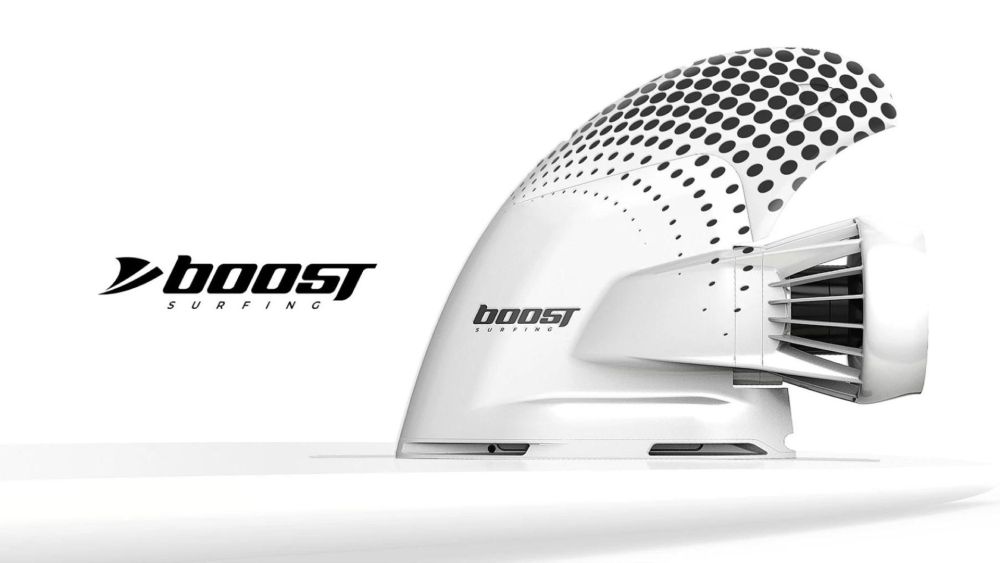
Surf Safety with Innovation
In the world of surf safety, a promising future unfolds as we adapt traditional knowledge with the latest technology, offering exciting opportunities for surfers at every level.
Products like the Boost Surfing Electric Fin symbolize the new wave of technology for a more remarkable surfing experience with speed. By blending such innovations, we’re stepping into a safer and more open aquatic environment for everyone.


Share:
Is Surfing Dangerous? 13 Common Risks of Surfing
Surfing Kirra Beach: Your Ultimate Guide